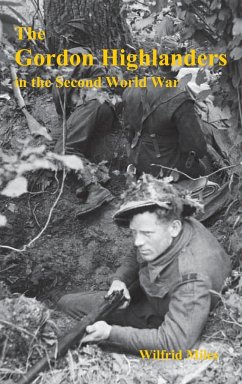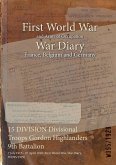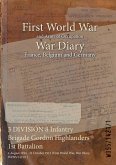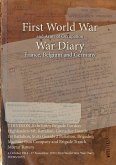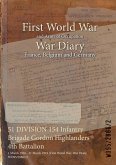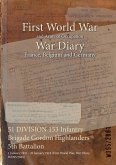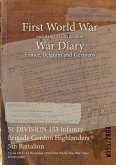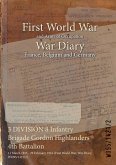The 1st Battalion, Gordon Highlanders was a Regular Army battalion that served originally with the 2nd Infantry Brigade, part of the 1st Infantry Division, and was sent to France in September 1939, shortly after the declaration of war, as part of the British Expeditionary Force, it remained there until May 1940. On 7 March 1940 the 1st Battalion exchanged with the Territorial Army 6th Battalion and transferred to the 153rd Infantry Brigade, part of the 51st (Highland) Division. The battalion served with the 51st Division during the Battle of France in 1940 when they were trapped and the majority of the division was forced to surrender at Saint-Valéry-en-Caux, with very few men escaping capture. The 1st Battalion was, however, reformed in the United Kingdom in August 1940 and went on to serve with the second formation of the 51st (Highland) Division (formed by redesignation of the 9th (Highland) Infantry Division throughout the rest of the Second World War, serving in North Africa at El Alamein, Tunisia, Sicily and North-western Europe, ending the war in Germany. The 2nd Battalion was based in Malaya as part of the Singapore garrison and fought in the battle for Singapore in February 1942, surrendering along with 130,000 other British Commonwealth soldiers on 15 February. The men of this battalion suffered more casualties as prisoners of war in Japanese captivity than they did during the fighting on Singapore Island and Malaya. The 2nd Battalion was reformed in May 1942 from personnel of the 11th Battalion and fought with the 15th (Lowland) Division, throughout North West Europe. They formed part of 227th (Highland) Brigade, the Junior brigade in the division. They were involved in the heavy fighting around Cheux and Tourville-sur-Odon in Normandy, the fight for the Netherlands and in the Battle of Uelzen in Germany near to the end of the war. The 4th (City of Aberdeen) Battalion served as a Machine Gun Battalion in the Battle of France and was later converted to a Royal Artillery regiment on 1 November 1941, becoming the 92nd Anti-Tank Regiment, Royal Artillery, as part of the 9th Armoured Division, but saw no active service during the war. The 5th Battalion went to France as part of the British Expeditionary Force: they were serving as part of the 153rd Brigade in the 51st Division during the Battle of France in 1940 when they were trapped and the majority of the division was forced to surrender at Saint-Valéry-en-Caux. The 5th Battalion was, however, reformed in the United Kingdom in August 1940 and went on to serve with the second formation of the 51st (Highland) Division (formed by redesignation of the 9th (Highland) Infantry Division throughout the rest of the Second World War, serving in North Africa and taking part in the Normandy landings. The 6th (Banffshire) Battalion, a Territorial Army battalion, was transferred from the 153rd Brigade in the 51st (Highland) Division before it joined the 2nd Infantry Brigade of the 1st Infantry Division. It took part in the Dunkirk evacuation. The 6th Battalion fought through the Tunisian, North African and Italian campaigns, in both the Battle of Anzio and Operation Diadem, and later the Battle for the Gothic Line, before ending the war on garrison duty in Palestine. The 7th (Mar and Mearns) Battalion amalgamated with the 5th Battalion, becoming the 5th/7th Battalion, Gordon Highlanders, and served with the second formation of the 51st (Highland) Division throughout the war. The 8th (City of Aberdeen) Battalion was also converted to artillery, becoming the 100th Anti-Tank Regiment, Royal Artillery. This battalion served with the 2nd Infantry Division in the Burma Campaign.
Hinweis: Dieser Artikel kann nur an eine deutsche Lieferadresse ausgeliefert werden.
Hinweis: Dieser Artikel kann nur an eine deutsche Lieferadresse ausgeliefert werden.

